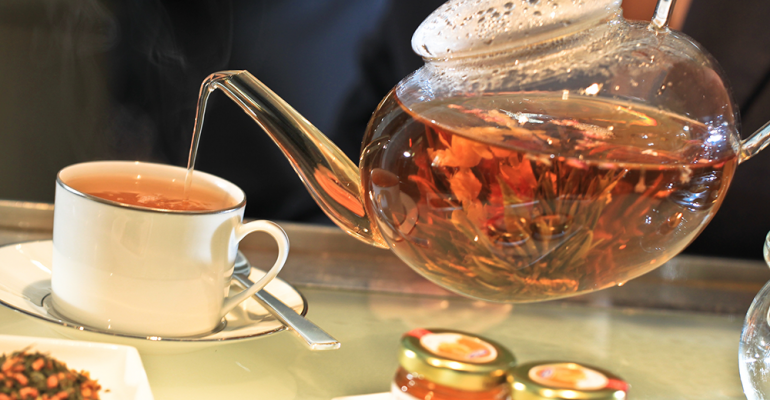At the Blue Duck Tavern inside the Park Hyatt in Washington, D.C., tea is treated like wine. There is an expansive menu of tea from different countries, a humidity-controlled tea cellar for storing and aging rare or limited-production teas, and a tea specialist on staff to guide guests through the experience.
“Like a sommelier, we pick teas, put them on a menu, and we’re out there selling,” said Christian Eck, associate director of food and beverage and tea specialist.
At the seasonal American restaurant, the tea experience begins with a menu featuring the names of the teas, their origin, caffeine levels, and a short description. There are more than 35 selections from “entry-level” teas priced at $8 to $16 per pot to rare and limited-production, single-estate teas priced from remote regions of China, Japan, Sri Lanka and the Himalayas, as well as herbal selections from Egypt, France and Argentina. They can fetch prices as high as $300.
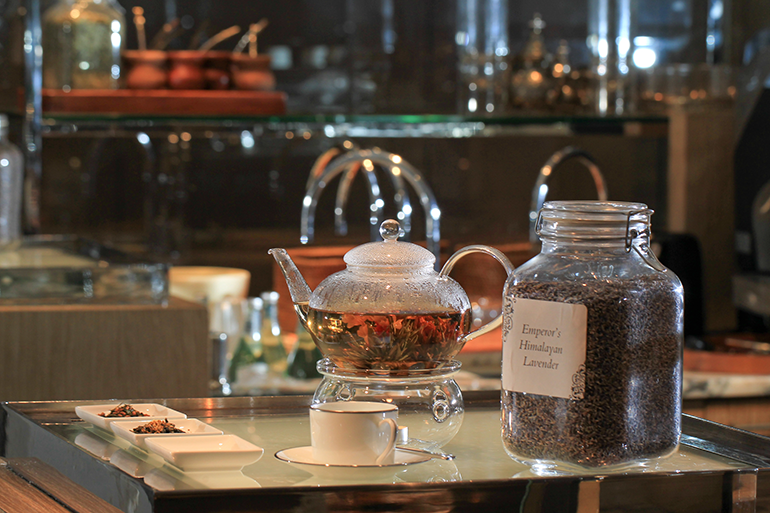
Emperor's Himalayan Lavender Tea.
After guests peruse the tea menu, in steps Eck, or one of his trained staff, to help make the selection.
“My goal is not necessarily to find the most far-fetched tea you’ll enjoy,” said Eck. “I try to find what style you normally drink and I suggest things in that realm. It’s something you can relate to, but enhances all of your past experiences.”
For example, for coffee drinkers, Eck likes to recommend Royal Keemun for $12, a “beginner black” out of China that he describes as “not super tannic, good acidity.”
“I call it my ‘coffee tea’,” Eck said. “It looks a little like a light cup of coffee, similar profile, so coffee drinkers can feel it.”
Whether ordered at the restaurant or in the adjacent tea lounge outfitted with low comfy chairs, teas are presented in glass pots with removable strainers on top of warmers alongside large Asian-style handle-less cups. Some of the higher-end teas are served in small Chinese clay pots.
“You get the whole service experience with it,” said Eck. “It’s not just one cup. “[There’s] a lot of room there to bring even more enjoyment out of one pot.”
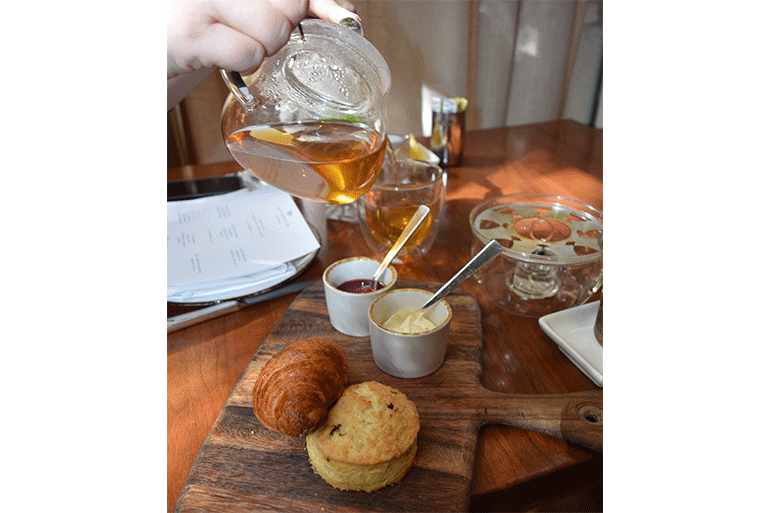
Afternoon tea with treats.
Among the most popular teas Eck serves are greens, as well as familiar non-green varieties, such as Big Ben English Breakfast ($9), Grand Himalaya First Flush Darjeeling ($14) and Dong Ding Oolong ($12). Also quite popular is Pu’er, a variety of smoked, fermented tea produced in Yunnan province in southwestern China. Young pu’er sells for as little as $8 a pot, while long-aged varieties range from $75 to $300.
The tea program works well, in large part, because it caters to the hotel’s large contingent of international guests, many of whom hail from cultures where tea is part of everyday life. However, Eck said he’s also seeing an increase in tea drinking among American guests, many of whom say they are cutting back on coffee consumption or looking at beverages through a health and wellness lens.
“Functionality of tea is also helping drive sales,” Eck said.
According to recent research from Mintel, consumers’ continued hunt for unique and authentic experiences, as well as a dissatisfaction with traditional teas that they see as basic, is fueling a desire for more innovative teas with unexpected flavors and functional benefits.
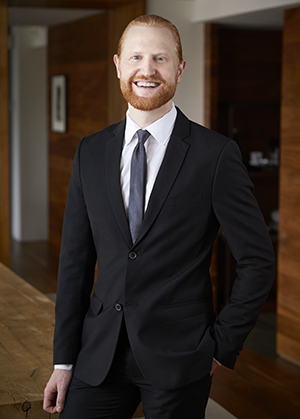 On top of consumers’ growing interest in tea, Blue Duck Tavern’s program works well because the margins are good. Depending on the quality and price point being served, Eck (left) said the profit margins on tea can be close to those of coffee.
On top of consumers’ growing interest in tea, Blue Duck Tavern’s program works well because the margins are good. Depending on the quality and price point being served, Eck (left) said the profit margins on tea can be close to those of coffee.
But great tea programs are not just for hotels with enough space for a tea cellar and a robust roster of international guests.
For restaurants considering adding a new tea program or expanding an existing one, Eck suggests partnering with a local shop that sells artisanal teas.
“Go to them and utilize their expertise when it comes to picking teas and training staff,” said Eck. “You can really rely on their suppliers to get you the freshest, best teas.”
The training part is key, Eck said.
“It can be overwhelming, especially with a menu our size,” he said. “ We mitigate it through staff training.”
While few restaurants will make the move into higher-end teas on the level that Blue Duck Tavern does, Eck does anticipate more restaurants will make some kind of shift.
“Most restaurants have a tea program out of necessity,” he said. “I think we’re going to see a shift from a box of bagged tea and hot water to having either loose leaf with higher quality … to actually putting thought into it and creating a mindful selection.”
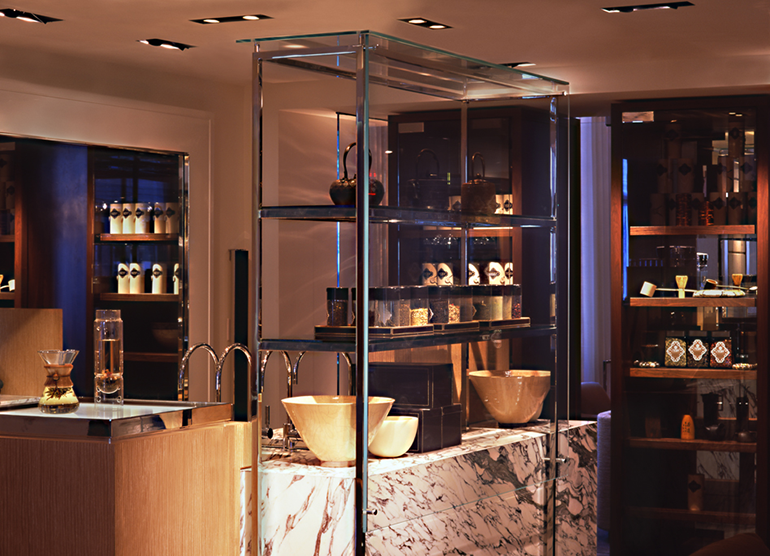
The humidity-controlled tea cellar for storing and aging rare or limited-production teas.

